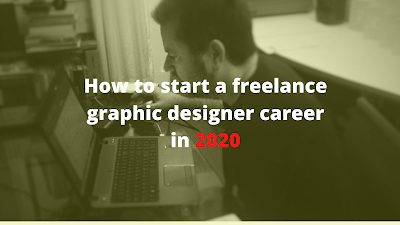What does UI & UX Designer do?
What does UI & UX Designer do?
UI & UX is a very big thing. I'm going to discuss the part with one touch of it because the entire UI & UX is a very big thing to discuss together. There will be a lot of demand for UI & UX in the coming future as everything is going to be digital.
Specific Tool
You need a lot of things to make any design, but I am going to tell you about some very important things.
1. Whiteboard.
2. Pen/Pencil/Paper.
3. Computer.
UX RESEARCH
Researchers are trying to understand the problem we want to solve. A lot of people will try to skip over this step, which leads to “The Tribalization of Design” that many people bemoan these days: Pretty solutions in search of an actual problem (or “Dear Lord, not another weather app design…”)
INFORMATION ARCHITECTURE/STRATEGY
IA is the traditional label to “wireframes” but it’s broader now. This is where the base flows begin, the content strategy happens, the product is defined, and the magic actually happens. What comes after is completely reliant on a good foundation here. And most of the work is analog. There are artifacts created in Visio or Omni Graf file or Illustrator or InDesign. Many times things stay on paper until they’re turned into a clickable prototype with Keynote, In Vision, or another similar tool.
EXPERIENCE DESIGN
This is where the rubber meets the road, the interfaces start to line up, and things go from concepts into clickable realities. Things that worked great in concept fail rapidly at this point. There’s as many tools as there are designers, but most of my day is spent with trace paper and pen, which then is converted into a Sketch file (I used to use Photoshop and Fireworks). There’s many designers who like working in Illustrator as well. Adobe recently released a beta of their new UX design tool (“XD”), which means everyone will now say “I do experience design!” because they opened the application once.
INTERFACE/INTERACTION/MOTION DESIGN
This overlaps with Experience Design. Many designers are doubling up working through experience flows and then also making decisions about the actual spit and polish of the application, especially in smaller teams. The larger the team, the more likely this is to be a specialized role. Some motion designers work straight in code. Some use frameworks built on top of developer tools (e.g. Apple’s Quartz Composer or Origami Studio from Facebook). Not all apps need this kind of interaction work, and sometimes it’s prototyped as straight up motion graphics video (After Effects, etc.).
MY DAILY RUN
So I’m a team of one, doing all the design for a small startup. I’m pow-wowing with the CMO, CTO, and CEO on a regular basis to provide resources we need. I’m also handling marketing design. Most of the time I start on pen and paper (working from home, most of my wall space is bookshelves, and a whiteboard is difficult to hide). Pretty much use the majority of the Adobe suite, Sketch, Textmate/Atom, Tower (Git client), and Office-esque tools.
MY FREELANCE RUN
When I’m doing freelance work I’m more of a hybrid Product Manager/UX designer/Front-end dev (no JS). Again I’m starting with pen and paper, moving rapidly into Sketch (where I’ve built a kit of parts for the brand as I’ve gone) and I’m posting mocks for review with developers and clients alike in In Vision. I’m delivering HTML/CSS into the Git repository with Textmate or Atom, Terminal, and Tower (Git GUI client)


Comments
Post a Comment